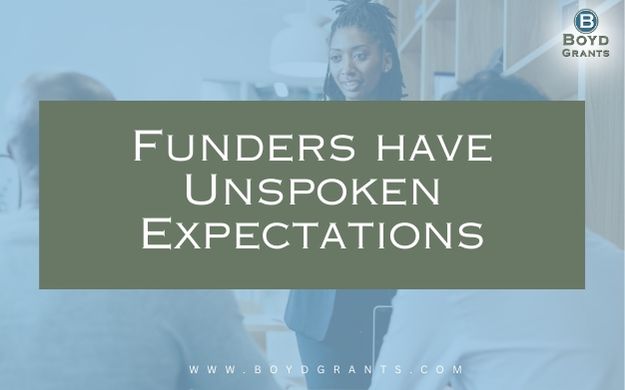When it comes to grant applications, most of us focus heavily on the Request for Proposal (RFP). After all, it’s the document that lays out the “official” requirements, outlining everything from eligibility criteria to budget guidelines. However, there’s often more to it than what meets the eye. Funders frequently have unspoken expectations that, if uncovered, can significantly boost your proposal’s chance of success.
Beyond the RFP: The Unwritten Rules
You might be familiar with the RFP, but understanding a funder’s deeper preferences is just as critical. These hidden expectations often aren’t explicitly listed in the proposal guidelines but are just as influential in their decision-making process. To gain an edge, you need to go beyond the written instructions and dig deeper into what really matters to the funder.
Research Past Grantees
One of the best ways to get a sense of what funders value is by researching past grantees. Many funding organizations publish their grantees on their website or provide case studies. By reviewing these, you can uncover patterns about the types of projects they tend to support. What do the successful proposals have in common? Is there a focus on certain sectors, or do they prefer initiatives that demonstrate sustainability or innovation? Perhaps the funder’s past grantees reflect a preference for certain geographic areas or demographic groups. Pay close attention to these details.
Webinars and Conferences
Funders often host webinars or attend conferences where they discuss their funding priorities. These sessions provide invaluable insights into what’s important to them, beyond the formal RFP. For instance, you may learn that they’re particularly interested in initiatives that incorporate a diversity, equity, and inclusion (DEI) lens or that they’re looking for projects that have strong collaboration with community organizations. Listening to these conversations allows you to understand their underlying values and tailor your application to meet those priorities.
Connect with Program Officers
Program officers are the gatekeepers to funding, and they often provide guidance throughout the application process. Building a relationship with them can be incredibly beneficial. While they can’t tell you exactly what to include in your proposal, they can give you a better sense of their priorities and preferences. Don’t be afraid to reach out with thoughtful questions about the RFP or inquire about trends they’ve noticed in the types of proposals they’ve funded recently. Their insights can be the missing piece that gives you the edge you need.
What Are Funders Looking For?
Now that we know how to uncover these unspoken expectations, let’s take a look at what they might be:
- Focus on Collaboration: Many funders are increasingly valuing collaboration over isolated projects. They want to see that your project is part of a larger network or ecosystem that works together to achieve a common goal. If your project includes partnerships with other organizations, highlight this in your proposal.
- A DEI Lens: Diversity, equity, and inclusion aren’t just buzzwords—they’re priorities for many funders. Incorporating DEI strategies into your project demonstrates that you’re addressing societal inequities and ensuring that your initiatives benefit all members of the community. Funders are looking for this type of commitment, whether it’s reflected in the beneficiaries of your project or in the team you assemble to implement it.
- Sustainability: Funders want to see that the impact of their grant will last beyond the initial funding period. Be prepared to outline how you will ensure the sustainability of your project, whether through additional funding, partnerships, or a plan for scaling.
- Innovation: Funders are often excited by innovative solutions that can create long-lasting change. Show them how your project brings a new approach to solving an existing problem, and they’ll be more inclined to support it.
- Measurable Impact: Funders need to see how their money will be used effectively. Clearly articulate the outcomes and impact of your project, and make sure your metrics are both ambitious and realistic.
How This Knowledge Gives You an Edge
When you tailor your proposal to align with these unspoken expectations, you’re not just meeting the basic requirements—you’re showing the funder that you’ve done your homework, understand their priorities, and are committed to making a meaningful impact. This thoughtful approach makes your application stand out among the crowd.
Incorporating these nuances into your proposal is a way of demonstrating that you are not only capable of executing a project, but that you are the right partner to help the funder achieve their mission and goals. When funders see that your project aligns with their values and expectations—whether spoken or unspoken—they’re more likely to see you as an ideal recipient for their support.
Final Thoughts
While the RFP lays the foundation, the true key to successful grant applications often lies in understanding the subtle, unwritten preferences of funders. By doing thorough research, participating in relevant webinars, and connecting with program officers, you can gain valuable insights that make your proposal more appealing. These unspoken expectations may seem elusive at first, but once uncovered, they can help you craft a proposal that rises above the rest.


Recent Comments